
March Awoɔ Bo: Akwankyerɛ a Edi Mu + Aboɔ a Wɔde Si Afoforo
Wɔ awodadi a efi ahohuru bere ase no, March nkokoaa wɔ awo abo abien a aban mpanyimfo de yɛ. March awo abo abien no yɛ aquamarine ne mogya abo, na abien no nyinaa hwɛbea yɛ soronko nanso ɛyɛ atetesɛm a ɛyɛ fɛ saa ara.
Wɔde Mars, Romafo ɔko nyame no din ato March ɔsram no, efisɛ na eyi ne bere a na Roma asraafo san fi ɔsatu ahorow ase bere a wɔatwe wɔn akɔ awɔw bere mu no. Wɔ mfiridwuma mu no, na March (anaa Martius) yɛ ɔsram a edi kan wɔ Romafo kalenda so ansa na wɔde January ne February rebɛka ho na ama ɛne ɔsram afe no ahyia yiye.
Sɛ tetefo a wɔsan kɔ akodi akyi no, wɔsan kɔɔ kuayɛ ne akwantu mu nso, na na ahohuru bere mu awia a ɛyɛ ne awia da wɔ March 20 (anaasɛ osutɔbere mu awia anadwo wɔ Kesee Fam). Afahyɛ ahorow pii sii, na na dodow no ara di Mars anaa afe foforo.
Ɛnnɛ, March yɛ mfiase foforo, awo foforo, ne daakye ho anidaso ho sɛnkyerɛnne. Bio nso, ɔsram no di pɛyɛ ho afahyɛ sɛ Mmea Abakɔsɛm Ɔsram, ne Amanaman Ntam Mmea Da a ɛwɔ da a ɛto so 8 no.
Bere a wɔde March ntease asi hɔ no, yɛbɛkɔ akɔhyɛ March awo abo abien no ntease, abakɔsɛm, ne ne su ahorow mu, mogya abo ne aquamarine .
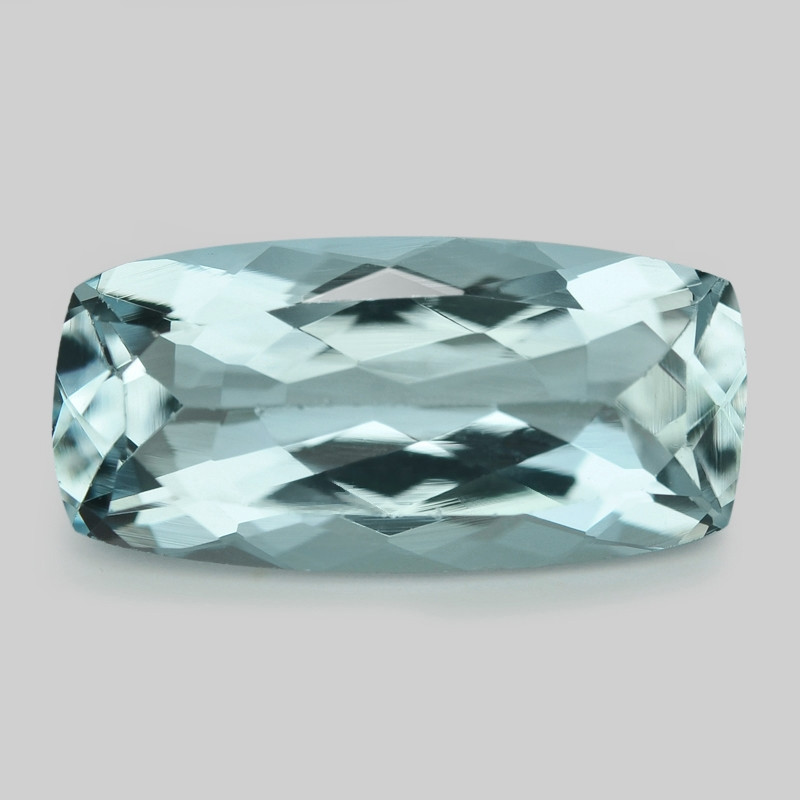
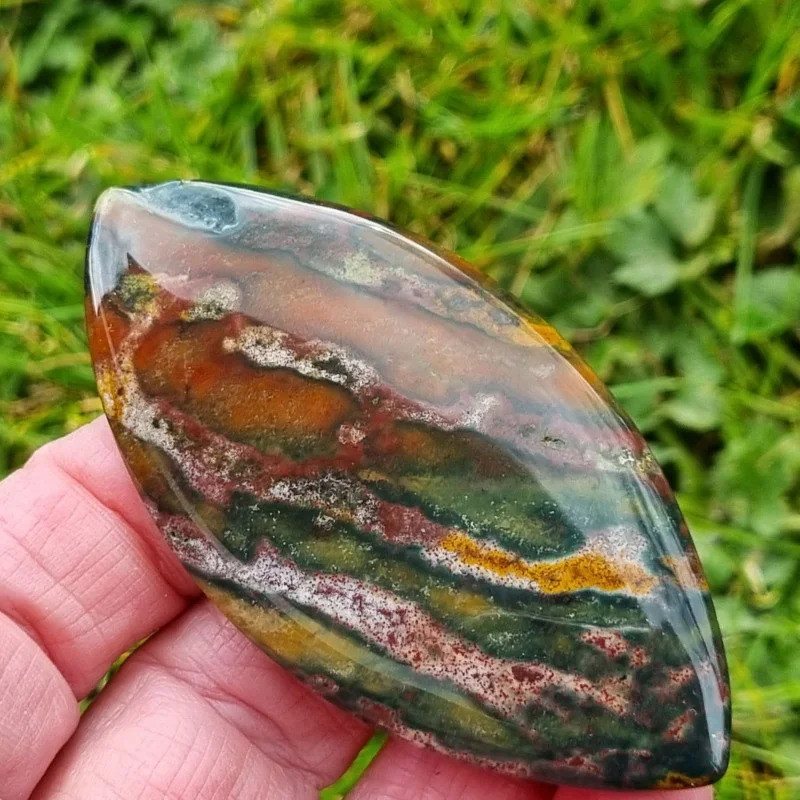 Mfonini a ɛwɔ atifi hɔ no: Faceted aquamarine aboɔden abo (atifi), mogya mu abo cabochon (ase)
Mfonini a ɛwɔ atifi hɔ no: Faceted aquamarine aboɔden abo (atifi), mogya mu abo cabochon (ase)
Dɛn Ne March Awo Abo no?
March wɔ awo abo abien a wɔde di dwuma wɔ amanne kwan so: aquamarine ne mogya mu abo. Saa aboɔden abo a ɛsom bo fã yi yɛ anansesɛm saa ara nanso ɛne ne ho bɔ abira koraa:
Kɔla : Aquamarine wɔ kɔla a ɛyɛ mmerɛw, ɛyɛ po mu ahabammono kosi wim bruu; mogya abo wɔ kwae mu ahabammono a emu dɔ a ɛyɛ kɔla a ɛyɛ kɔkɔɔ a ɛyɛ kɔkɔɔ.
Nneɛma a ɛda adi pefee : Aquamarine aboɔden abo taa yɛ nea ɛda adi pefee; mogya mu abo taa yɛ nea wontumi nhu.
Aboɔden abo Nsusuwii : Aquamarines taa yɛ afã horow ; wɔtaa twitwa mogya abo ma ɛyɛ cabochons .
Ayeforohyia Afahyɛ : Aquamarine yɛ ayeforohyia afe a ɛto so 18 afahyɛ aboɔden abo a wɔde di dwuma wɔ amanne kwan so, na mogya abo yɛ aboɔden abo a wɔde si ananmu wɔ mfe 14 afahyɛ ho.
Nanso dɛn nti na awo abo abien wɔ hɔ ma March? Ne tiaatwa mu no: abakɔsɛm!
March Awo Abo Mfiase
Awo abo atetesɛm fi afeha a ɛto so 1 Y.B.
Wɔ awo abo a wɔahyehyɛ a edi kan mu no, na mogya mu abo nkutoo ne March awobo.
Nanso, aboɔden abo a wɔde hu no pɛpɛɛpɛ amma bere tenten, enti wogye abo ankasa a ɛwɔ tete nkyerɛwee ahorow mu no ho akyinnye. Nea ɛka ho no, nkurɔfo amfi ase anhyɛ wɔn ankasa awo ɔsram no awo abo kosii sɛ agudeyɛfo a wɔwɔ Germany anaa Poland fii ase tɔn awo abo agude bɛyɛ 1500 mfe no mu .
Nsɛm a wɔahyehyɛ a wɔahyɛ da ayɛ a yenim nnɛ no fii ase bɛyɛ 1800 mfe no mu, na Tiffany & Co. tintim awo abo anwensɛm wɔ 1870 , a wɔkyerɛ sɛ Gregorian kyerɛwfo bi a wɔammɔ ne din na ɔkyerɛwee.
March anwensɛm a efi saa kratawa no mu ni:
“Ɔno na wɔwoo no wɔ March mu no
Wɔrenhyɛ aboɔden abo biara gye Mogya Abo
Wɔbɛhwɛ ma wayɛ nea ɛkɔ so daa
Nokware adamfofa ne nokwaredi.”
National Association of Jewelers (mprempren Jewelers of America) yɛɛ awo abo a wɔahyehyɛ a wɔahyɛ da ayɛ wɔ 1912 mu . Jewelry Industry Council of America yɛɛ nneɛma a wɔahyehyɛ no foforo wɔ 1952 mu , na nsɛm afoforo (a ne fã kɛse no ara te sɛ nea ɛte saa) bae.
Wɔ saa nsɛm a wɔahyehyɛ yi mu no, wɔde aquamarine mae sɛ nea wɔde besi mogya mu abo ananmu.
Ɛnnɛ, Britania ne Amerika awo abo a wɔahyehyɛ no de aquamarine di kan sen mogya mu abo, nanso wɔda so ara kyerɛw abien no nyinaa din.
Enti, so March awobo no yɛ aquamarine anaasɛ mogya mu ɔbo? Ɛyɛ abien no nyinaa! Wubetumi afrɛ mogya abo sɛ “amammerɛ kwan so” awobo na aquamarine sɛ “nnɛyi” awobo.
Sɛ yɛreka atetesɛm ho asɛm a, momma yɛnhwɛ aboɔden abo abien yi abakɔsɛm.
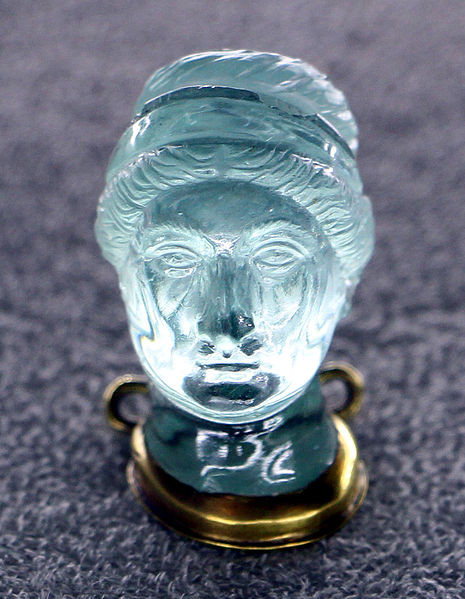 Mfonini a ɛwɔ atifi hɔ no: Tete adwinni, ɔhemmaa bi ti wɔ aquamarine mu, ebia Matidia, a wɔde sika kɔkɔɔ asan de asi hɔ wɔ ne nnyinaso; Wɔkyerɛw no afeha a ɛto so 2 (wɔkyerɛɛ nkyerɛkyerɛmu ase fii Italia kasa mu)| Mfonini no fi: Sailko, CC-BY-SA-3.0
Mfonini a ɛwɔ atifi hɔ no: Tete adwinni, ɔhemmaa bi ti wɔ aquamarine mu, ebia Matidia, a wɔde sika kɔkɔɔ asan de asi hɔ wɔ ne nnyinaso; Wɔkyerɛw no afeha a ɛto so 2 (wɔkyerɛɛ nkyerɛkyerɛmu ase fii Italia kasa mu)| Mfonini no fi: Sailko, CC-BY-SA-3.0
Abakɔsɛm & Amammerɛ mu Nsɛm a Ɛfa March Awo Abo Ho
Su biako a March awo abo abien no wɔ ne abakɔsɛm a ɛyɛ fɛ na ɛtrɛw a anansesɛm ne atetesɛm ahyɛ mu ma!
Abakɔsɛm mu Aquamarine a Wɔde Di Dwuma
Aquamarine din no fi Latin nsɛmfua aqua , a ɛkyerɛ “nsu” ne po so , a ɛkyerɛ “po,” esiane sɛnea ɛne po mu nsu di nsɛ nti. Ɛwom sɛ saa din yi bae wɔ 1609 mu de, nanso na wonim nea kan no na wɔfrɛ no “sea-green beryl ” no mfehaha pii.
Ná tetefo gye di sɛ March awobo no ma wɔbɔ wɔn ho ban wɔ po so, na na wɔtaa di ho adwini yɛ agyan. Ná anansesɛm ahorow a ɛfa aquamarine mfiase ho fi asukɔtweaa a wɔyerae so kosi po nyame Poseidon (anaa Neptune) na ɔbɔɔ no so.
Tetefo pii de aquamarine bataa mmerantebere mu anigye ne mmerantebere mu dɔ ho anigye ho.
Wɔ Mfinimfini Mmere no mu no, na wogye di sɛ aquamarine bɔ obi ho ban fi awuduru ho (ɛma ahemfo ani gye ho) na ɛma ahonhonsɛmdi tumi yɛ mmerɛw.
Kristofo de aquamarine bataa Ɔhotefo Thomas a na ɔhwɛ hyɛn mu adwumayɛfo so no ho. Ná ebinom nso gye di sɛ aboɔden abo no hyɛ aware a anigye wom ho nkuran.
Saa ara na na Buddhafo gye di sɛ aquamarine kyerɛ ɔdɔ. Amanne biako a ɛwɔ India ne sɛ wɔde aquamarine agude akyɛde ma awarefo foforo.
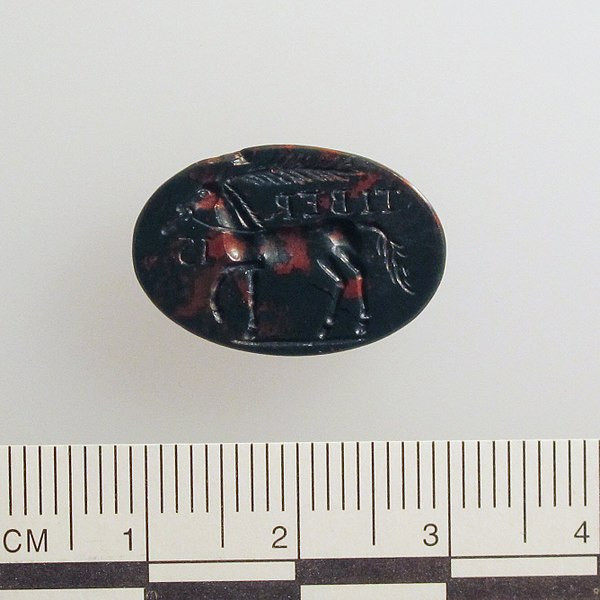 Mfonini a ɛwɔ atifi hɔ no: Roma Ahemman heliotrope intaglio a wɔde akokɔ ti anguipes (onyame a awɔ ma wɔn nan), a wɔkyerɛw no afeha a ɛto so 3 Y.B., a wɔde kyerɛe wɔ Metropolitan Museum of Art | Mfonini no fi: Met Museum, Ɔmanfo de
Mfonini a ɛwɔ atifi hɔ no: Roma Ahemman heliotrope intaglio a wɔde akokɔ ti anguipes (onyame a awɔ ma wɔn nan), a wɔkyerɛw no afeha a ɛto so 3 Y.B., a wɔde kyerɛe wɔ Metropolitan Museum of Art | Mfonini no fi: Met Museum, Ɔmanfo de
Mogya Abo wɔ Abakɔsɛm ne Ahintasɛm Nsɛm a Ɛfa Ho
Edin “mogya abo” no kyerɛ sɛnea ɛtaa yɛ kɔkɔɔ te sɛ mogya a ɛtɔ gu fam.
Nanso, na tete Hela din no ne “ heliotrope ,” a wonya fii nsɛmfua helios , a ɛkyerɛ “owia,” ne trepo , a ɛkyerɛ “dannan,” efisɛ na ɔbo no yɛ kɔkɔɔ koraa wɔ owia a ɛrekɔtɔ ase anaa sɛ wɔde si nsu ase wɔ owia hann tẽẽ mu.
Tetefo de mogya abo dii dwuma de yɛ nneɛma a mfaso wɔ so na ɛyɛ ahintasɛm.
Babilonfo yɛɛ mogya abo nsɔano, na na abirɛmpɔn hyehyɛ mogya abo sɛnkyerɛnne nkaa de stamp nkrataa a ɛho hia. Mesopotamiafo ne Babilonfo nso de mogya abo dii dwuma de teɛteɛɛm, bere a na Misrifo, Romafo, ne Helafo gye di sɛ March awobo no ma wɔyɛ den wɔ ɔko anaa agumadi mu.
Tete Roma nhomanimfo Pliny Ɔpanyin no kyerɛwee sɛ mogya mu abo yɛ owia ahwehwɛ, na ɛma obi tumi hu owia a ɛtɔ. Tete Roma kyerɛwfo foforo, Damigeron, kyerɛwee sɛ mogya abo kaa nea ɛbɛba daakye ho nkɔm na, “sɛ wɔde gu dwetɛ ahina a nsu ayɛ mu ma mu na wɔde si owia ano a, ɛdan kɔ so ma ɛyɛ te sɛ nea mogya ayɛ mununkum.”
Ná nkoa a wɔade wɔn ho no taa hyɛ mogya abo a wɔde owia anaa kanea akyerɛw so de kyerɛ ahofadi.
Ná abodin a na wɔtaa de frɛ no ne “ agyidifo abo ,” na awiei koraa no ɛma wɔtoo din “mogya bo.”
Kristofo anansesɛm bi sɔree wɔ mogya abo a efii ase bere a wɔbɔɔ Yesu Kristo asɛndua mu no ho. Asɛm no ka sɛ ɔbo no bae bere a Kristo mogya hwee asase a ɛyɛ ahabammono anaasɛ jasper ahabammono bi so wɔ asɛnnua no ase (ɛsono sɛnea wɔka no). Sɛnea ɛte no, na ebinom gye di sɛ ɔbo no sa nsɛm a ɛfa mogya a ɛkɔ nipadua no mu ho.
Eduu Mfinimfini Mmere no mu no, na agyidifo abusuabɔ no da so ara wɔ mogya abo a wɔde ayɛ agyiraehyɛde nneyɛe ho mfonini ne agyan a wogye di sɛ egyina hɔ ma Kristo afɔrebɔ no so.
Mfinimfini Mmere mu Europafo yɛɛ mogya mu abo a wɔde sa mogya a ɛtɔ, akisikuru, ne awɔ a wɔaka. Wɔ India , na wɔde mogya mu abo a wɔde powder ayɛ di dwuma sɛ aduru a ɛma obi nya nna ho akɔnnɔ.
Mprempren, India yɛ mmeae a wɔyɛ mogya abo a ɛsen biara no mu biako, na ɛno na ɛde yɛn ba March ahwehwɛ yi mfiase so!
 Mfonini a ɛwɔ atifi hɔ no: Aquamarine rough
Mfonini a ɛwɔ atifi hɔ no: Aquamarine rough
Asase Ho Mfiase & Nneɛma a Ɛwɔ March Awo Abo Mu
Aquamarine yɛ beryl ahorow ahorow. Beryl abo yɛ nea ɛyɛ den yiye, na ɛwɔ 7.5 kosi 8 wɔ Mohs hardness scale no mu . Saa aboɔden abo yi taa ba wɔ granite pegmatites a ɛwɔ beryl mu.
Efĩ a ɛwɔ hɔ no ma wonya kɔla ahorow, te sɛ dade a ɛyɛ dade anaa dade a ɛwɔ aquamarine kɔla bruu kosi ahabammono akyi no. Saa bere yi nyinaa, nsukorade a ɛyɛ tokuru a wɔde ahyɛ mu a ɛne ne ho di nsɛ anaasɛ ɛteɛteɛ akuwakuw betumi ama wɔanya chatoyancy kakra (“ɔkraman aniwa” nkɛntɛnso) anaa asterism (“nsoromma” nkɛntɛnso). Aquamarines a eye sen biara no bi fi Siberia ne Brazil.
Mogya abo yɛ chalcedony , anaa microcrystalline quartz ahorow ahorow. Ebinom kyekyɛ mogya mu abo mu sɛ jasper bi , chalcedony kuw ketewaa bi a wɔde gyina hɔ ma abo a ɛnyɛ hann na ɛyɛ nsusuwso.
March awobo yi a wɔhyehyɛe no te sɛ quartz abo afoforo, nanso nsensanee kɔkɔɔ no fi hematite a wɔde aka ho no mu . Mogya abo a ɛyɛ aboɔden abo dodow no ara fi India.
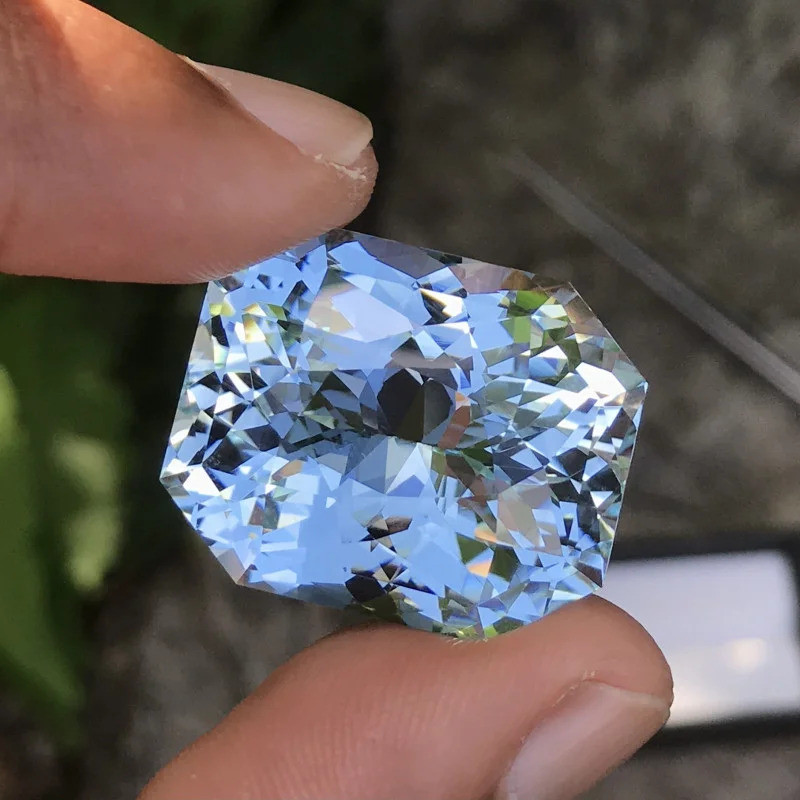 Mfonini a ɛwɔ atifi hɔ no: Santa Maria bruu aquamarine a ɛwɔ afã horow
Mfonini a ɛwɔ atifi hɔ no: Santa Maria bruu aquamarine a ɛwɔ afã horow
Nneɛma a Ɛyɛ Bruu ne ahabammono: Aquamarine’s Delicate Palette
Ɛmfa ho sɛ efi bruu kosi ahabammono nkutoo no, aquamarine kɔla ahorow no gu ahorow ma ɛyɛ nwonwa. Nneɛma a ɛkorɔn kɔ bruu a ɛho tew na ɛyɛ ma, nanso mpɛn pii no, March awo abo yi kɔla yɛ ahabammono-blue a ɛyɛ mmerɛw.
Kɔla ahorow bi wɔ aguadi din ahorow:
Santa Maria : Bruu a ɛyɛ tuntum a ɛwɔ mfinimfini, a ɛyɛ bruu a ɛyɛ den kɛse; Wohuu no wɔ Brazil Santa Maria de Itabira a wotu fam no mu
Espirito Santo : Saturation a ɛba fam a ɛyɛ bruu sen Santa Maria nanso ɛyɛ soronko hyerɛn ne kɔla a emu dɔ
Maxix : Kɔla a ɛyɛ bruu tuntum paa; Wɔntaa nhu wɔ abɔde mu wɔ Brazil Maxxe a wotu no mu; Mpɛn pii no, wɔde mframa a ano yɛ den a entumi nnyina (ɛtaa sɛe) na ɛyɛ .
Nampula : Robin nkesua bruu; Wohuu no wɔ Mozambique Nampula mantam mu
Pedra Azul : Nsukyenee bruu; Wohu wɔ Brazil Pedra Azul mantam mu
Esiane sɛ kɔla bruu a ɛho tew no som bo kɛse nti, wɔde ɔhyew yɛ aquamarine aboɔden abo pii de yi nsensanee a ɛyɛ ahabammono fi hɔ.
Afei, mogya mu ɔbo te dɛn?
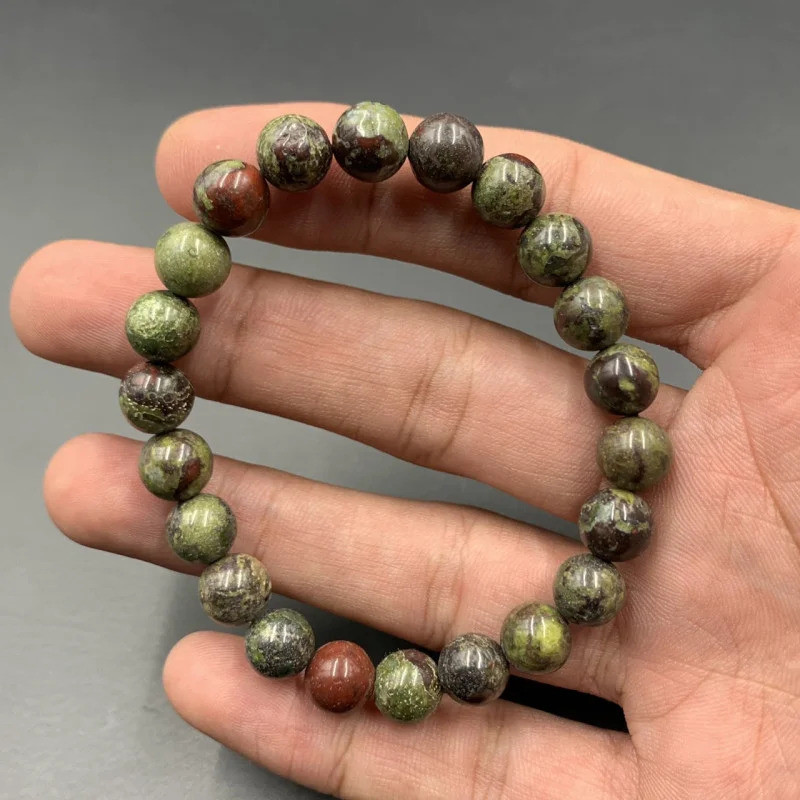
Bloodstone’s Mystique: Nsõ a Ɛyɛ Kɔkɔɔ ne Kɔkɔɔ a Ɛyɛ Kɔkɔɔ
Wɔ mfiridwuma mu no wobu mogya abo sɛ plasma bi, chalcedony a ɛyɛ ahabammono a ɛyɛ fã bi a ɛyɛ hann kosi nea ɛnyɛ hann a ɛwɔ nsensanee kɔkɔɔ, fitaa, anaa kɔkɔɔ.
Mogya abo awobo a wɔtaa hu no yɛ kwae mu ahabammono a nsensanee kɔkɔɔ wɔ so. Nsonsonoe ne ɛtɔ mmere bi a nsensanee a ɛwɔ mogya abo so no nso betumi ayɛ borɔdɔma, bruu, fitaa, kɔkɔɔ, anaasɛ asase mu kɔla ahorow yi a wɔaka abom.
Sɛ hematite kɔkɔɔ a wɔde ka ho no da nkyɛn a, mineral afoforo a ɛwɔ mogya mu kɔla akyi no bi ne amphibole, chlorite, ne pyroxene.
Ebinom kyekyɛ “heliotrope” mogya abo mu sɛ ɛyɛ nea ɛyɛ hann a nsensanee kɔkɔɔ wɔ so na “plasma” mogya abo sɛ ɛnyɛ hann a nsensanee kɔkɔɔ kakraa bi pɛ na ɛwɔ mu.
Nsonsonoe bi a ɛwɔ aguadi din ahorow mu:
Mogya Jasper : Nsonsonoe a ɛyɛ kɔkɔɔ-tuntum a ntini fitaa wɔ so
Fancy Jasper : Kɔla ahorow a ɛwɔ hɔ titiriw a ɛnyɛ ahabammono ne kɔkɔɔ, anaasɛ kɔla ahorow a wɔaka abom
Sɛ nneɛma a ɛda adi da nkyɛn a, nsonsonoe foforo a ɛda aquamarine ne mogya mu abo ntam ne nea ɛkyerɛ wɔ honhom fam ne sɛnea wɔde di dwuma sɛ abo a wɔde sa yare .
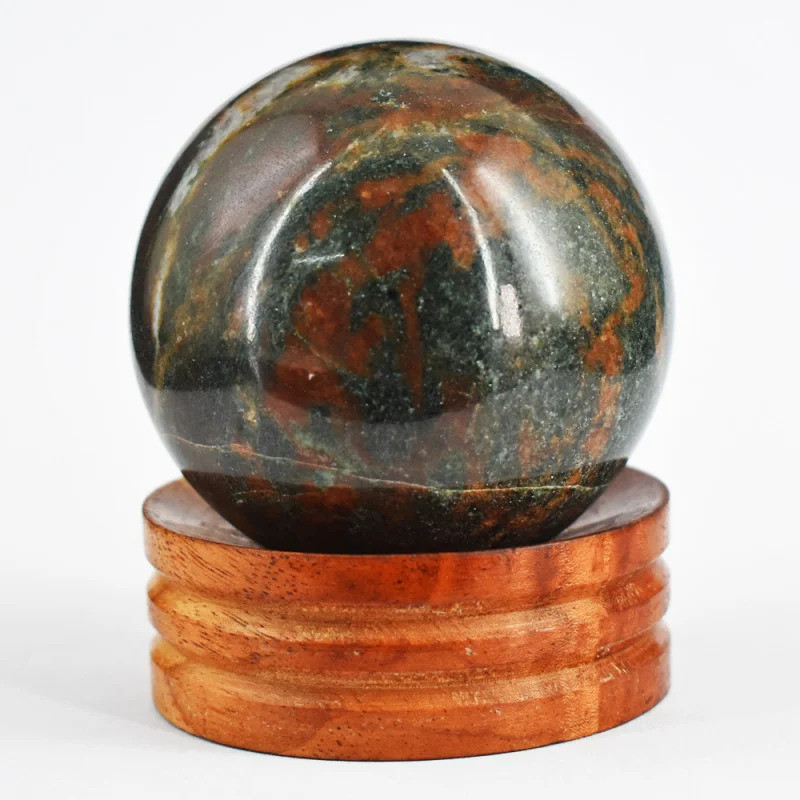 Mfonini a ɛwɔ atifi hɔ no: Mogya abo a wɔde sa yare bɔɔl
Mfonini a ɛwɔ atifi hɔ no: Mogya abo a wɔde sa yare bɔɔl
Honhom & Metaphysical Nkyerɛase
Nea aquamarine awobo no kyerɛ ne ahotew, kommyɛ, ne mmerantebere. Saa bere yi nyinaa, mogya bo yɛ ahoɔden, boasetɔ, ne afɔrebɔ ho sɛnkyerɛnne.
Wɔ ahoɔden ayaresa mu no, aquamarine yɛ chakra ɔbo ma menewa chakra, bere a mogya abo bue ntini (gyinabea) chakra.
Nanso, March awo abo no nkyerɛase ahorow no bi di nsɛ:
Akokoduru : Wɔkyerɛ sɛ abo abien no nyinaa ma akokoduru nya nkɔso, a aquamarine twe adwene si tumi a wode bɛma wo ho so de akokoduru aka wo nokware na mogya abo twe adwene si honam fam akokoduru a wode bɛkɔ w’adaeso akyi.
Ahotew : Ebia ɔbo biara de ahotew ne ahotew nneɛma bɛma, ayi nneɛma bɔne afi hɔ na aboa wo ma woafi ase foforo.
Akwanside ahorow a Wobedi So : Wogye di sɛ aquamarine boa wo ma wudi nkate mu akwanside ahorow ho dwuma, te sɛ nkitahodi wɔ abusuabɔ mu. Wɔkyerɛ sɛ mogya mu abo bɔ wo ho ban na ɛboa wo ma wudi akwanside ahorow a ɛmma wuntumi nyɛ yiye no so.
Wɔ nsoromma mu hwɛ mu no, aquamarine ne Pisces (wɔwoo no February 19 kosi March 20) nsu mu ahoɔden a ɛyɛ mmerɛw no hyia pɛpɛɛpɛ. Saa bere yi nyinaa, mogya mu abo da Aries (wɔwoo no March 21 kosi April 19) a ogya yɛ hyew na ɔpɛ anuonyam a Mars di so no adi.
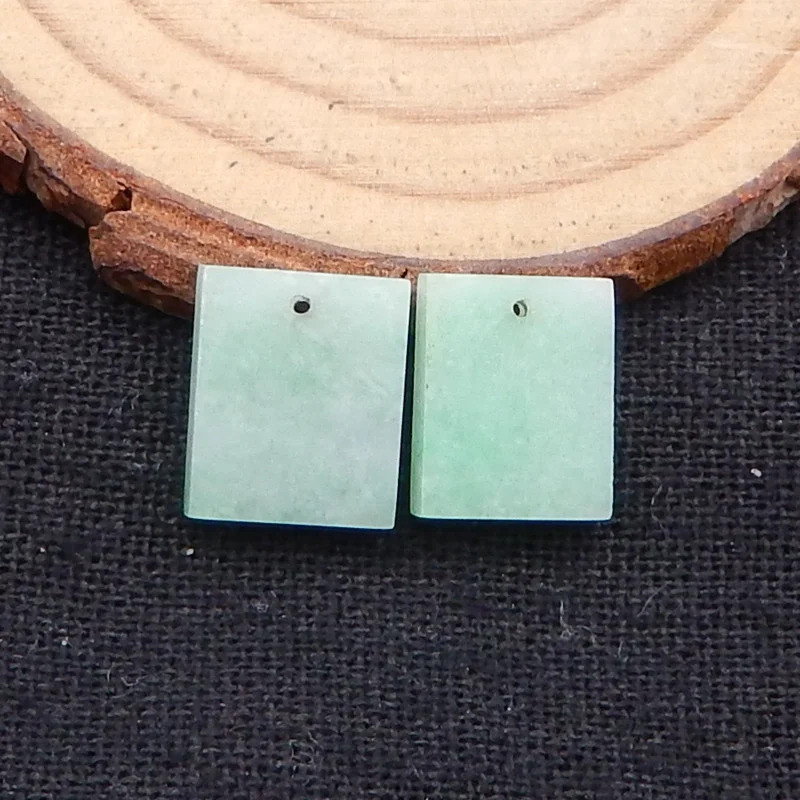 Mfonini a ɛwɔ atifi hɔ no: Jade asomuade a wɔasen
Mfonini a ɛwɔ atifi hɔ no: Jade asomuade a wɔasen
March Awo Abo Afoforo a Wɔbɛhwehwɛ
So aquamarine ne bloodstone nyɛ wo vibe? Wowɔ akwan foforo a wubetumi afa so!
March awobo a ɛyɛ ahintasɛm a egyina tete Tibetfo nsoromma mu hwɛ mu ne jade , a ɛkyere ahohuru bere mu dɛ a Mars kyɛ no.
March awobo a ɛto so abien a wɔde si ananmu ne jasper — ɛte sɛ mogya abo nanso egu ahorow pii.
Ade foforo a ɛyɛ ahabammono a wobetumi apaw ne emerald , ahohuru bere mu awobo. Beryl nuabea a aquamarine, emerald wɔ kɔla a ɛyɛ ahabammono a emu dɔ na ɛsan nso gyina hɔ ma onyin foforo.
Sɛ yɛhwɛ ne bo a, mogya mu abo yɛ nea wotumi nya kɛse, na aquamarine betumi ayɛ nea ne bo yɛ den ama ebinom.
Aquamarine awo abo a wɔde si ananmu a ne bo nyɛ den bi:
Wubetumi nso apaw aquamarine a wɔayɛ , a wɔayɛ wɔ lab nanso ɛwɔ nnuru ne abɔde mu nneɛma a ɛwɔ abɔde mu aquamarine nyinaa.
 Mfonini a ɛwɔ atifi hɔ no: Ɔhemmaa Elizabeth II a ɔhyɛ ne aquamarine tiara (a wɔaka ho asɛm wɔ ase hɔ) wɔ Brazil Ɔman Apontow ase wɔ March 7, 2006 | Mfonini no fi Agência Brasil, CC-BY-SA-3.0 | Fael a edi kan
Mfonini a ɛwɔ atifi hɔ no: Ɔhemmaa Elizabeth II a ɔhyɛ ne aquamarine tiara (a wɔaka ho asɛm wɔ ase hɔ) wɔ Brazil Ɔman Apontow ase wɔ March 7, 2006 | Mfonini no fi Agência Brasil, CC-BY-SA-3.0 | Fael a edi kan
Nnɛyi & Famous Jewelry Designs
Wɔada aquamarine ne mogya abo nyinaa adi wɔ agude soronko pii mu wɔ nnɛyi mmere yi mu.
Nsu mu nsu mu aduru
Sɛ́ March awobo anaasɛ ade a ɛyɛ fɛ ara kwa no, aquamarine aboɔden abo a ɛwɔ anim no hyerɛn de kɔla a ɛyɛ mmerɛw nanso ɛhyerɛn a tumi wom.
Aquamarine awo abo nkaa — anaasɛ ayeforohyia nkaa — yɛ nea nkurɔfo ani gye ho yiye, na wɔtaa de si abo fitaa anaa kɔla a ɛyɛ hann a wɔde kasa te sɛ abohene fitaa nkyɛn .
Aquamarine agude ho nhwɛso ahorow bi a agye din ne:
Ɔhemmaa Elizabeth Aquamarine Tiara : Britain Ɔhemmaa Elizabeth na ɔhyɛɛ Garrard nsa wɔ 1957 mu, na ɔyɛɛ saa platinum tiara yi a Brazilfo aquamarines ne diamonds a Brazil Ɔmampanyin Getúlio Vargas de maa no wɔ 1953. Sao Paulo Amrado de aquamarine kɛse bi mae sɛ wɔmfa nsi mfinimfini ɔbo no ananmu wɔ 1971 mu.
Hirsch Aquamarine Pendant : Wɔde saa aquamarine a wɔatwa no emerald, a ne kɛse yɛ carat 109.92 yi asisi sika kɔkɔɔ fitaa pendant a wɔde micro pavé-set diamonds 118 ahyɛ mu. Kan no na ɛyɛ Franse Ɔhempɔn Louis XV dea, na wɔbɔɔ amanneɛ sɛ ɔde n’agyapade a ɛma obi dwo no dii dwuma.
Meghan Markle’s Engagement Ring : Saa sika kɔkɔɔ mpɛtea kɔkɔɔ yi wɔ emerald-twit, bruu a ɛyɛ hann, 13-carat aquamarine centerstone a accent diamond nketewa. Asprey na ɔyɛɛ mprɛte no na Lucia Flecha de Lima na ɔde maa Diana bɛyɛ afe 1996. Diana babarima Prince Harry de mprɛte no maa Meghan Markle, na ɔhyɛɛ no wɔn ayeforohyia da wɔ afe 2018 mu.
Mogya mu ɔbo
Nea ɛnte sɛ aquamarine no, mogya mu abo yɛ ɔbo a ɛyɛ den, ɛyɛ dɔte, na emu duru a ɛwɔ kɔla ahorow a ɛda saa su ahorow yi adi.
Wɔtaa twitwa March awobo no ma ɛyɛ cabochons anaa adwini, enti mogya abo agude pii yɛ pendants anaa nkapo a wɔde nhwiren ayɛ. Nanso, mogya abo nkaa a wɔasen anaa wɔde kabe ayɛ a ɛkae tete ntadehyɛ ahorow no renya nkɔanim, titiriw wɔ sika kɔkɔɔ mmeae a ɛyɛ fɛ mu.
Mogya abo mpue wɔ ahemfo agude pii mu, nanso adehye mogya bo biako (a wobetumi aka sɛ ɛno ne mogya bo a agye din sen biara) ne Roma Ɔhempɔn Kronkron Rudolf II (1552 kosi 1612) nsɔano. Wɔde akyerɛ wɔ Louvre Tete Nneɛma Akorae a ɛwɔ Paris no, wɔasen ɔhempɔn no nsɔano wɔ mogya abo yi mu.
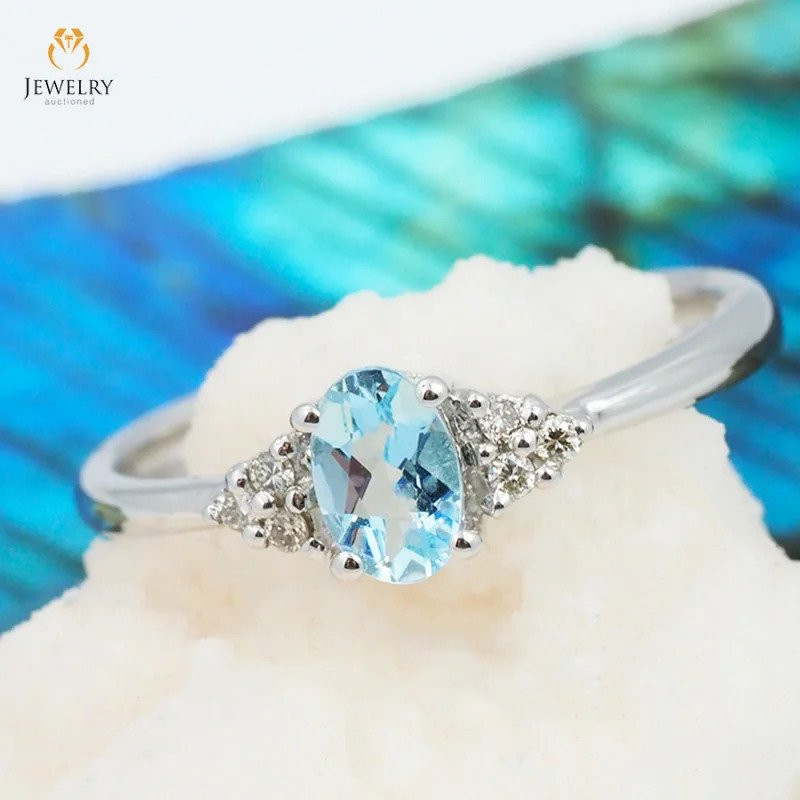
March Awobo Bɛn na Ɛfata Wo?
So aquamarine a ɛyɛ mmerɛw na ɛyɛ ethereal anaa mogya abo a ɛyɛ dɛ na ɛyɛ dɔte no sɔ wo hwɛ? March awo abo abien no nyinaa ma wonya akokoduru ne ayaresa, bere a ɛde ɔsram no fekubɔ ahorow ne mfiase foforo hyia no. Ɛmfa ho nea ɛbɛba biara no, ɔbo abien no mu biara a ɛwɔ March awo abo agude mu no wɔ anigye a enni bere mu!
搜尋Gemstone Encyclopedia
相關拍賣
相關文章
Obiara wɔ aboɔden abo a ɛne ne nsoromma agyiraehyɛde hyia. Wɔsan frɛ eyinom sɛ wo Nsoromma Abo. Sua pii fa saa abo yi ho na hwehwɛ nea wo Nsoromma Abo no yɛ.
10th May 2018
Mfiase no na wɔde Awo Abo anaa aboɔden abo no bata nsoromma mu hwɛ anaa ɔsram a ankorankoro bi awo ho. Hwehwɛ nea wo bo no yɛ na hwɛ abo a yɛwɔ sɛ yɛtɔn no
8th Feb 2021
Gem Rock Auctions wɔ Certified Gemstones a ɛso sen biara wɔ intanɛt so no mu biako. Hwehwɛ aboɔden abo sɔhwɛ afiri a wɔapene so yi mu.
24th Jul 2018
最新的文章
Chrysanthemum nhwiren abo yɛ abɔde mu anwonwade a ɛwɔ calcite, celestite, anaa andalusite nhwiren fitaa bi a wɔde asisi limestone tuntum anaa atɛkyɛ abo so.
13th Jan 2026
Rainbow lattice sunstone yɛ feldspar ahorow a ɛwɔ optical nsunsuanso abiɛsa fɛfɛ a efi nneɛma ahorow a wɔde ka ho a ɛwɔ hɔ no mu ba. Ɛyɛ ogya kɔla display ne lattice nsusuwso ma ɛyɛ coletor abohene a wɔntaa nhu!
12th Jan 2026
Thulite yɛ Norwayfo aboɔden abo a wɔntaa nhu a ɛda rosy hue a ɛyɛ hyew a efi zoisite mineral abusua a wɔtaa de di dwuma wɔ agude tebea ne pendants mu adi.
6th Jan 2026
文章類別
How To's is where you will find helpful articles from gem Rock Auctions on how to cut gemstones, select gemstones and buy gemstones.
9文章




